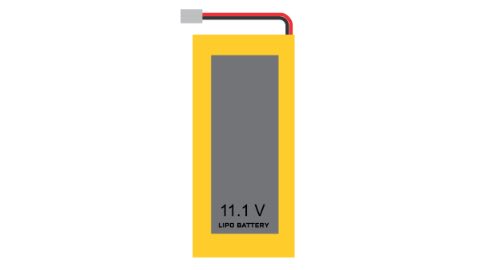
Researchers at the University of Michigan have developed a rechargeable zinc battery that integrates into the structure of a robot to provide much more energy. The new batteries are of particular importance as robot technology is shrinking to the microscale and below, making current stand-alone batteries too big and inefficient.
“Robot designs are restricted by the need for batteries that often occupy 20% or more of the available space inside a robot, or account for a similar proportion of the robot’s weight,” said Nicholas Kotov, who led the research.
The new battery works by passing hydroxide ions between a zinc electrode and the air side through an electrolyte membrane – made of a network of aramid nanofibers and a new water-based polymer gel. The gel and aramid nanofibers are not a fire hazard if the battery is damaged, unlike the flammable electrolyte in lithium ion batteries. The materials used are cheap, abundant, and largely nontoxic, making the battery more environmentally friendly than those currently in use.
Multifunctional structural batteries can potentially free up space and reduce weight, but until now they could only supplement the main battery.
“No other structural battery reported is comparable, in terms of energy density, to today’s state-of-the-art advanced lithium batteries. We improved our prior version of structural zinc batteries on 10 different measures, some of which are 100 times better, to make it happen,” Kotov said.
The combination of energy density and inexpensive materials means that the battery may double the range of delivery robots.
“This is not the limit, however. We estimate that robots could have 72x more power capacity if their exteriors were replaced with zinc batteries, compared to having a single lithium ion battery,” said Mingqiang Wang, first author of the paper.
A paper on this research is to be published in Science Robotics, titled, “Biomorphic structural batteries for robotics.” The research was funded by the Department of Defense, the National Science Foundation, and the Air Force Office of Scientific Research. The University of Michigan is seeking commercial partners to bring the technology to market.
